
The radial engine is a reciprocating type internal combustion engine configuration in which the cylinders "radiate" outward from a central crankcase like the spokes of a wheel. It resembles a stylized star when viewed from the front, and is called a "star engine" in some other languages.

Wright Aeronautical (1919–1929) was an American aircraft manufacturer headquartered in Paterson, New Jersey. It was the successor corporation to Wright-Martin. It built aircraft and was a supplier of aircraft engines to other builders in the golden age of aviation. Wright engines were used by Amelia Earhart and Charles Lindbergh. In 1929, the company merged with Curtiss Aeroplane and Motor Corporation to form Curtiss-Wright.
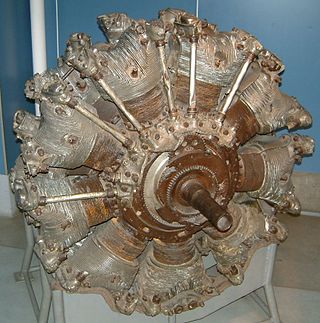
The Nakajima Homare was an air-cooled twin-row 18 cylinder radial Japanese aircraft engine manufactured during World War II. Producing almost 2,000 horsepower, it was used widely by both the Imperial Japanese Army and the Imperial Japanese Navy. Given the Navy service designation NK9, the "Homare" was also given the company designation NBA, Army experimental designation Ha-45 (ハ45) or, Army long designation Nakajima Army Type 4 1,900 hp Air-Cooled Radial and, (coincidentally) unified designation code of Ha-45.
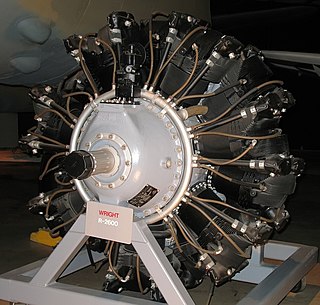
The Wright R-2600 Cyclone 14 is an American radial engine developed by Curtiss-Wright and widely used in aircraft in the 1930s and 1940s.

Wright Cyclone was the name given to a family of air-cooled radial piston engines designed by the Wright Aeronautical Corporation and used in numerous American aircraft in the 1930s, 1940s and 1950s.

The Pratt & Whitney Wasp was the civilian name of a family of air-cooled radial piston engines developed in the 1920s, 1930s and 1940s.

The Jacobs Aircraft Engine Company was an American aircraft engine manufacturer that existed from 1926 to 1956.

Charles Lanier Lawrance was an American aeronautical engineer and an early proponent of air-cooled aircraft engines.
The Nakajima Ha1 Kotobuki was an aero-engine developed by Nakajima. It was a radial piston developed under licence from the Bristol Jupiter.
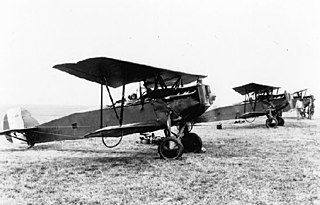
The Huff-Daland Type XV Training Water-Cooled TW-5 was a biplane trainer designed by the Huff-Daland Aero Corporation in the early 1920s for the United States Army Air Service.

The Lawrance J-1 was an engine developed by Charles Lanier Lawrance and used in American aircraft in the early 1920s. It was a nine-cylinder, air-cooled radial design.

The Wright R-760 Whirlwind was a series of seven-cylinder air-cooled radial aircraft engines built by the Wright Aeronautical division of Curtiss-Wright. These engines had a displacement of 756 in³ (12.4 L) and power ratings of 225-350 hp (168-261 kW).

The ABC Dragonfly was a British radial engine developed towards the end of the First World War. It was expected to deliver excellent performance for the time and was ordered in very large numbers. It proved, however, to be extremely unreliable and was abandoned when its faults were unable to be corrected.

The Wright R-790 Whirlwind was a series of nine-cylinder air-cooled radial aircraft engines built by Wright Aeronautical Corporation, with a total displacement of about 790 cubic inches (12.9 L) and around 200 horsepower (150 kW). These engines were the earliest members of the Wright Whirlwind engine family.
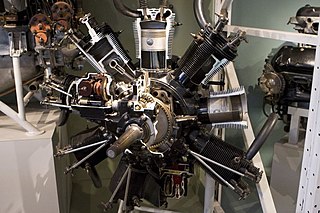
The Wright Whirlwind was a family of air-cooled radial aircraft engines built by Wright Aeronautical. The family began with nine-cylinder engines, and later expanded to include five-cylinder and seven-cylinder varieties. Fourteen-cylinder twin-row versions were also developed, but these were not commercially produced.
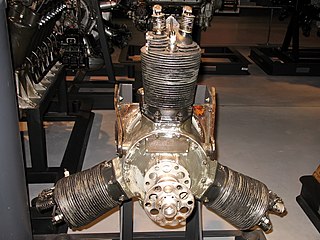
The Lawrance L-3 and L-4 were early aircraft piston engines with three radial cylinders, designed and built by the Lawrance Aero Engine Company in the early 1920s. The L-3 / L-4 series were marketed by the Wright Aeronautical Corporation as the Wright Gale after the acquisition of the Lawrance company.
The Wright R-4090 Cyclone 22 was an American experimental radial piston engine designed and built in prototype form by Wright Aeronautical during the 1940s.
The Nakajima Ha5 is a twin row, 14 cylinder air-cooled radial aircraft engine built by the Japanese Nakajima Aircraft Company. The engine was a development of earlier single-row Japanese engines, the Kotobuki and Hikari, which had combined features of the Bristol Jupiter and Pratt & Whitney R-1340 Wasp designs.

The Packard X-2775 was an American experimental liquid-cooled aircraft engine. The engine was constructed as a single crankcase with four banks of six cylinders in what is close to an X-configuration. The engine consisted of two 60° V12 engines, one upright and one inverted, sharing a common crankcase. Although technically incorrect, the engine has been characterized as two Packard 1A-1500 V-12 engines coupled with a mutual crankcase.

















